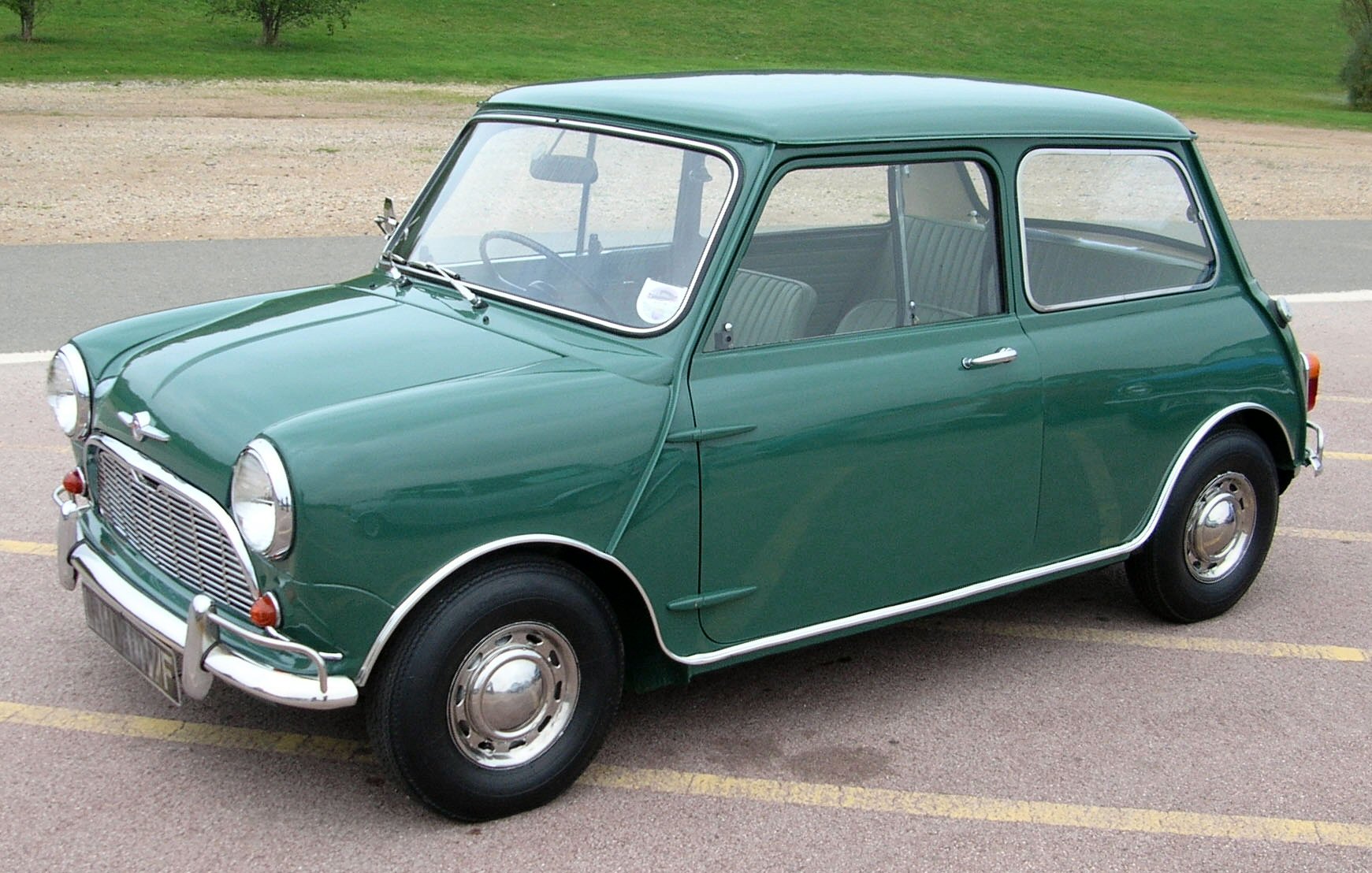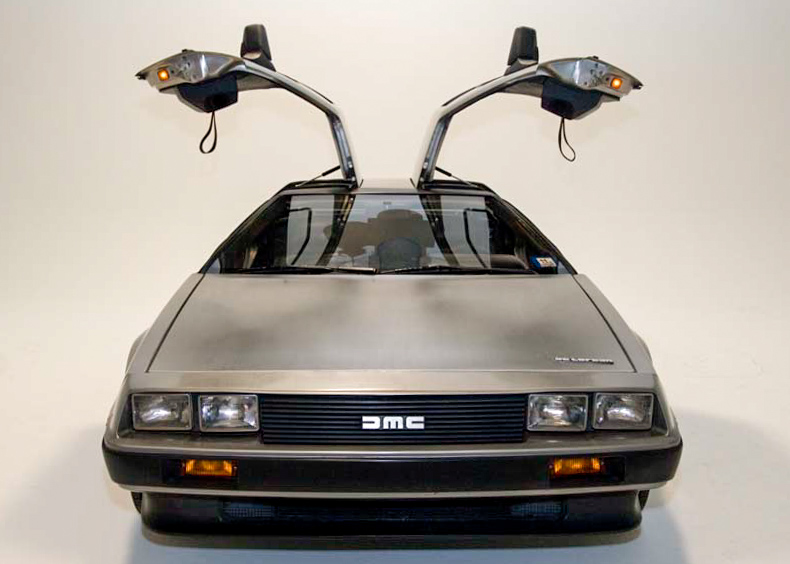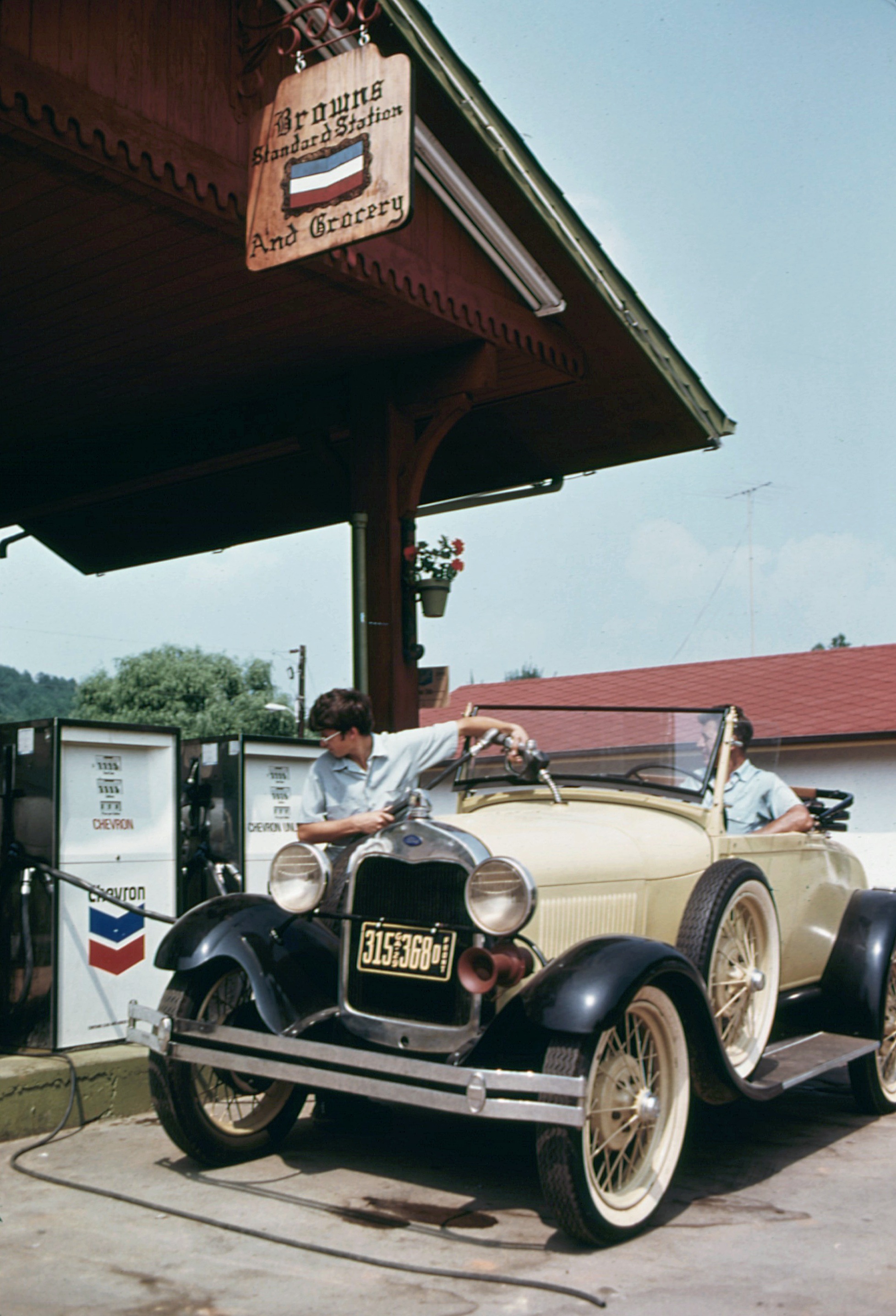|
Friedrich Geiger
Friedrich Geiger (24 November 1907 – 13 June 1996) was a German automobile designer whose most notable cars, the pre-World War II Mercedes-Benz 540K and post-war Mercedes-Benz 300SL, are among the most highly regarded in automotive history. Biography Born in Süßen in the Swabian region of southern Germany, Geiger originally trained as a cartwright, before studying as a design engineer at University prior to joining Daimler-Benz in April 1933. He began in the special vehicles manufacturing department, where, in the 1930s, he was responsible for the 500K and 540K sports cars. Geiger left Daimler-Benz in April 1948, but returned to the company two years later, this time as a test engineer in the styling department. He became head of styling within a few years, after designing the 300SL gullwing coupé, named one of the ten greatest Mercedes ever built and one of the 25 greatest cars of the 20th century. Geiger continued to work at Daimler-Benz until his retirement in D ... [...More Info...] [...Related Items...] OR: [Wikipedia] [Google] [Baidu] |
Süßen
Süßen (or Süssen) is a town in the district of Göppingen in Baden-Württemberg in southern Germany. It is located on the river Fils 8 km east of Göppingen, near Stuttgart. History Süßen was first mentioned with the name of ''Siezun'' in the Lorsch codex in 1071. Großsüßen (Greater'' Süßen'') was at first in the possession of the count of Helfenstein, who, in 1382 pledged it to the city of Ulm. Kleinsüßen (Smaller ''Süßen''),though, was in the hands of the family Pappenheim. They inherited the land from the landlords of Bubenhofen. In the Mediatization in 1802, Großsüßen was given to Bavaria, but in 1810, the lands were given back, in an exchange contract to Württemberg. Kleinsüßen, though, was never Bavarian land. After the exchange, both places, Groß- and Kleinsüßen, were assigned under the Head Office of Geislingen. With the opening of the Fils Valley Railway and Süßen station in 1847, Kleinsüßen was connected to the public transportation. ... [...More Info...] [...Related Items...] OR: [Wikipedia] [Google] [Baidu] |
Car Of The Century
The Car of the Century (COTC) is an international award that was given to the world's most influential car of the 20th century. The election process was overseen by the Global Automotive Elections Foundation. The winner, the Ford Model T, was announced at an awards gala on December 18, 1999 in Las Vegas, Nevada. The selection process An elaborate and formal process for deciding the ''Car of the Century'' was devised. It started in October 1996, when a list of 700 cars was offered by the COTC organising committee as candidates for the award, which their experts had selected from recommendations made from within the car industry and from car clubs. In February 1997 a list of 200 eligible cars was announced at the AutoRAI motor show in Amsterdam, having been selected from the 700 by an honorary committee of experts who were all independent and highly respected and experienced automotive experts. The next step was for a jury of 133 professional automotive journalists from 33 coun ... [...More Info...] [...Related Items...] OR: [Wikipedia] [Google] [Baidu] |
Gullwing Door
In the automotive industry, a gull-wing door, also known as a falcon-wing door or an up-door, is a car door that is hinged at the roof rather than the side, as pioneered by Mercedes-Benz 300 SL, first as a race car in 1952 ( W194), and then as a production sports car in 1954. Opening upwards, the doors evoke the image of a seagull's wings. In French, they are (butterfly doors). The papillon door was designed by Jean Bugatti for the 1939 Type 64, 14 years before Mercedes-Benz produced its similar, famous 300 SL gullwing door. The papillon door is a precursor to the gullwing door, and is slightly different in its architecture, but is often overlooked when discussing gull-wing design. Conventional car doors are typically hinged at the front-facing edge of the door, with the door swinging outward horizontally. Apart from the Mercedes-Benz 300 SL of the mid-1950s, Mercedes-Benz SLS and the experimental Mercedes-Benz C111 of the early 1970s, the best-known examples of road-cars ... [...More Info...] [...Related Items...] OR: [Wikipedia] [Google] [Baidu] |
Convertible
A convertible or cabriolet () is a passenger car that can be driven with or without a roof in place. The methods of retracting and storing the roof vary among eras and manufacturers. A convertible car's design allows an open-air driving experience, with the ability to provide a roof when required. A potential drawback of convertibles is their reduced structural rigidity (requiring significant engineering and modification to counteract the effects of removing a car's roof). The majority of convertible roofs are of a folding construction framework with the actual top made from cloth or other fabric. Other types of convertible roofs include retractable hardtops (often constructed from metal or plastic) and detachable hardtops (where a metal or plastic roof is manually removed and often stored in the trunk). Terminology Other terms for convertibles include cabriolet, cabrio, drop top, drophead coupé, open two-seater, open top, rag top, soft top, spider, and spyder. Consisten ... [...More Info...] [...Related Items...] OR: [Wikipedia] [Google] [Baidu] |
Bruno Sacco
Bruno Sacco (born 12 November 1933) is an Italian automobile designer who served as the head of styling at German car giant Daimler-Benz between 1975 and 1999. Biography According to Sacco himself, he was first inspired towards car design as an eighteen-year-old, after seeing a Raymond Loewy-styled 1950 Studebaker Commander Regal as he cycled through the streets of Tarvisio in 1951. Afterwards he could not get the car out of his head, and "knew islife had been decided." After studying mechanical engineering at the Polytechnic University of Turin he attempted to seek work at the renowned Ghia and Pininfarina '' carrozzerie'', before moving to Germany when his efforts proved unsuccessful. Daimler-Benz hired him as a stylist in 1958, and although he intended to stay only briefly, his marriage to Berliner Annemarie Ibe in 1959 and the birth of their daughter Marina the following year made him reassess his plans. Sacco rose through the corporate ranks at Daimler-Benz over the next ... [...More Info...] [...Related Items...] OR: [Wikipedia] [Google] [Baidu] |
Limousine
A limousine ( or ), or limo () for short, is a large, chauffeur-driven luxury vehicle with a partition between the driver compartment and the passenger compartment. A very long wheelbase luxury sedan (with more than four doors) driven by a professional driver is called a stretch limousine. In some countries, such as the United States, Germany, Canada, and Australia, a limousine service may be any pre-booked hire car with driver, usually but not always a luxury car. In particular, airport shuttle services are often called limousine services though they often use minibuses. __TOC__ Etymology The word ''limousine'' is derived from the name of the French region Limousin. However, how the name of the region transferred to the car is uncertain. One possibility involves a particular type of carriage hood or roof physically resembled the raised hood of the cloak worn by the shepherds there. An alternate etymology speculates that some early chauffeurs wore a Limousin-styl ... [...More Info...] [...Related Items...] OR: [Wikipedia] [Google] [Baidu] |
Mercedes-Benz 600
The Mercedes-Benz 600 (W100) is a line of ultra-luxury cars produced by Daimler-Benz from 1963 to 1981. The forerunner of the modern Maybach marque, the ''Grosser Mercedes'' ("Grand Mercedes") succeeded the Type 300d "Adenauer" as the company's flagship model. It was positioned above the 300-series Mercedes-Benz W112 in price, amenities, and status. Its few competitors included British and American equivalents such as Rolls-Royce, Bentley, Lincoln Continental, Cadillac Series 75, and Imperial. It was well known for its ownership among celebrities and political leaders throughout the late 20th century. Generally, the short-wheelbase (SWB) models were designed to be owner-driven, whereas the long-wheelbase (LWB) and limousine models, often incorporating a central divider with power window, were intended for chauffeur operation. History The 600 replaced the Mercedes-Benz W189 limousine, which was nicknamed the Adenauer, after Konrad Adenauer, who employed several of these d ... [...More Info...] [...Related Items...] OR: [Wikipedia] [Google] [Baidu] |
Mercedes-Benz W116
The Mercedes-Benz W116 is a series of flagship luxury sedans produced from September 1972 until 1980. The W116 automobiles were the first Mercedes-Benz models to be officially called S-Class, although earlier sedan models had already unofficially been designated with the letter 'S' – for ''Sonderklasse'' or "special class." The ''W116'' was selected European Car of the Year in 1974. History The 'new' S-class generation development began in 1966, which was only a year after the launch of the W108/09. This was the first Mercedes saloon to feature the brand new corporate styling theme which was to be continued until 1993 when the 190 was discontinued. The design, finalized in December 1969 was a dramatic leap forward, with more masculine lines that combined to create an elegant and sporty character. The basic design concept carried through the themes originally introduced on the R107 SL-Class roadster, especially the front and rear lights. As for the SL, the W116 received the ri ... [...More Info...] [...Related Items...] OR: [Wikipedia] [Google] [Baidu] |
Mercedes-Benz W108
The Mercedes-Benz W108 and W109 are luxury cars produced by Mercedes-Benz from 1965 through to 1972 (or 1973 in North America). The line was an upgrade of the Mercedes-Benz W114/W115, to succeed the W111 and W112 ''fintail'' sedans. The cars were successful in West Germany and in export markets including North America and Southeast Asia. During the seven-year run, a total of 383,361 units were manufactured. Since the W108 and W109 were only available as 4-door models, similarly squarish 2-door W111 and W112 coupés and cabriolets, ''without'' pronounced tailfins, filled those niches and are frequently mistaken for W108/109 two-doors. Model history The car's predecessors, the Mercedes-Benz W111 (1959–71) and W112 (1961–67), helped Mercedes-Benz develop greater sales and achieve economy of scale production, reducing both manufacture time and cost. Throughout the 1950s, Mercedes-Benz had been producing the coachwork 300 S and 300 SL and all but hand-built 300 Adenauers ... [...More Info...] [...Related Items...] OR: [Wikipedia] [Google] [Baidu] |
Convertible
A convertible or cabriolet () is a passenger car that can be driven with or without a roof in place. The methods of retracting and storing the roof vary among eras and manufacturers. A convertible car's design allows an open-air driving experience, with the ability to provide a roof when required. A potential drawback of convertibles is their reduced structural rigidity (requiring significant engineering and modification to counteract the effects of removing a car's roof). The majority of convertible roofs are of a folding construction framework with the actual top made from cloth or other fabric. Other types of convertible roofs include retractable hardtops (often constructed from metal or plastic) and detachable hardtops (where a metal or plastic roof is manually removed and often stored in the trunk). Terminology Other terms for convertibles include cabriolet, cabrio, drop top, drophead coupé, open two-seater, open top, rag top, soft top, spider, and spyder. Consisten ... [...More Info...] [...Related Items...] OR: [Wikipedia] [Google] [Baidu] |
Mercedes-Benz R107
The Mercedes-Benz R107 and C107 are sports cars which were produced by Mercedes-Benz from 1971 until 1989, being the second longest single series ever produced by the automaker after the G-Class. They were sold under the SL (R107) and SLC (C107) model names as the 280 SL, 280 SLC, 300 SL, 350 SL, 350 SLC, 380 SL, 380 SLC, 420 SL, 450 SL, 450 SLC, 450 SLC 5.0, 500 SL, 500 SLC and 560 SL. The R107/SL was a two-seat car with a detachable roof. It replaced the W113 SL-Class in 1971 and was replaced by the R129 SL-Class in 1989. The predecessor W113 was notably successful in North America, with 19,440 units (40%) of 48,912 total units sold in the US. The R107 and C107 were even more focused on the American market, with specialized engines, bumper designs, headlights, and emissions management designs. The R107 and C107 sold 204,373 units in the US (68%) of 300,175 total units sold (excluding grey market sales into the US). It was the only Mercedes roadster during its entire produ ... [...More Info...] [...Related Items...] OR: [Wikipedia] [Google] [Baidu] |
Mercedes-Benz W113
: ''See Mercedes-Benz SL-Class for a complete overview of all SL-Class models.'' The Mercedes-Benz W 113 is a two-seat Roadster (automobile), roadster/coupé, introduced at the Geneva Motor Show#1963, 1963 Geneva Motor Show, and produced from 1963 through 1971. It replaced both the 300 SL (Mercedes-Benz 300SL, W 198) and the 190 SL (Mercedes-Benz 190SL, W 121 BII). Of the 48,912 W 113 Mercedes-Benz SL-Class, SLs produced, 19,440 were sold in the US. The W 113 SL was developed under the auspices of Mercedes-Benz Technical Director Fritz Nallinger, Chief Engineer Rudolf Uhlenhaut and Head of Styling Friedrich Geiger. The lead designers were Paul Bracq and Béla Barényi, who created its patented, slightly concave hardtop, which inspired the "Pagoda" nickname. All models were equipped with an Straight-6, inline-six cylinder engine with multi-port fuel injection. The bonnet, boot lid, door skins and tonneau cover were made of aluminum to reduce weight. The ... [...More Info...] [...Related Items...] OR: [Wikipedia] [Google] [Baidu] |







.jpg)
.jpg)